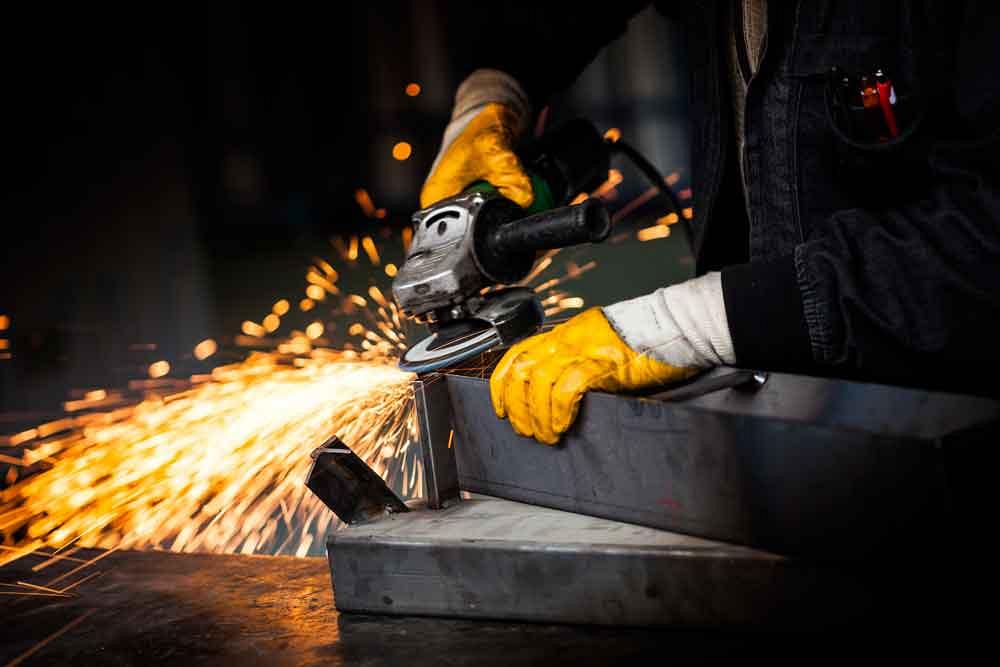The following are necessary for personal protection equipment (PPE) in working with abrasives.
Most commonly found in the industrial environment are loud noises, sparks and fumes.
1. Goggles with side shields
2. Ear protection
3. Face Mask or respirator
Recommendations and fit testing available – from Welders Supply
4. Gloves
5. Leather aprons
6. Helmet
Set up of the grinder for safe operation.
1. Guards
Protection of the user and limits the size of wheel to the grinder
2. Unplug grinder
3. Set upright
4. Pick correct wheel
Start from the finish
Three grits courser if not satisfactory cut
5. Check for speed of grinder and size of wheel
2 inch 30,600 RPM
3 inch 20,000 RPM
4 inch 15,300 RPM
4 ½ inch 13,300 RPM
5 inch 12,200 RPM
6 inch 10,200 RPM
7 inch 8,600 RPM
8 inch 7,600 RPM
9 inch 6,600 RPM
6. Check for right wheel for diameter
7. Check wheel for damage
Dropped, warped, ring test
8. Check proper assembly of flange
Must be back flange
Must seat properly for abrasive using
9. Test grinder away from you
Operation of the grinder
1. Operating angles
a. Type 27 15%
b. Type 28 5%
c. Sanding disc 2%
d. Finishing disc 5%
2. Cutoff wheel
a. Cutoff wheel use at 90%
b. No face grinding with cutoff wheel, make special wheel for that
What are you cutting
1. ANSI 1.4.18
a. Use four inch less for 1/8 inch steel
b. Use four to six inch for 3/16 inch steel
Use 6 – 12 inch for ¼ inch steel
Use 12 -23 for 3/8 inch steel
Use 23 – 48 for ½ inch steel
Use 48 for 5/8 inch steel
2. Hold face of disc against the work piece at the proper angle
a. Do not press too hard, let the grinder do the work so the grinder won’t slip out of your hand
b. Do not modify the manufacturer’s disc or wheels as they are made with the safety requirements required by ANSI and OSHA.
Craig Cooley Abrasive Specialist



